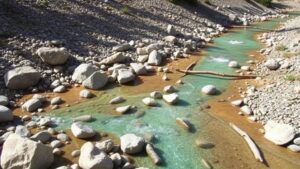Recovering Silver From Small Veins in Limestone With Basic Tools
Recovering Silver From Small Veins in Limestone With Basic Tools
Silver recovery from mineral veins can be a rewarding yet challenging process, particularly when the veins are embedded within limestone. Limestones inherent properties can complicate extraction efforts, necessitating the use of basic tools and methods. This article explores effective techniques for recovering silver from small veins in limestone, providing practical insights and examples to illustrate the process.
Understanding the Geology of Silver Deposits
Silver is commonly found in both primary and secondary deposits. Primary deposits are typically associated with igneous rock formations, while secondary deposits occur through processes such as oxidation or sedimentation in areas like limestone formations. Small veins of silver can often be located in limestone due to hydrothermal processes where mineral-laden hot water cools and precipitates minerals in fractures and cavities.
Tools Required for Recovery
Successful silver recovery from small veins in limestone can often be accomplished using minimal tools. Here are some essential tools required for the task:
- Pickaxe or hammer
- Chisel
- Miners shovel
- Safety goggles and gloves
- Panning or sluicing equipment
- Small scale for weighing the recovered material
These basic tools facilitate the initial extraction and separation of silver from its mineral matrix. For example, a pickaxe is critical for breaking apart hard limestone and accessing the precious metal within, while panning may be employed to separate lighter silicate materials from denser silver ore.
Locating Silver Veins in Limestone
Identifying promising sites for silver recovery is crucial. Look for indicators often associated with silver deposits:
- Darker colored streaks or lines in limestone
- Presence of other indicator minerals such as galena (lead ore)
- Unusual alterations in the rocks texture and composition
For example, when exploring limestone formations in the Western United States, prospectors often seek out areas where limestone intersects with fault lines, as these are prime locations for mineral deposition.
Extraction Methods
Once the silver veins are located, extraction can proceed with one of the following methods:
Manual Extraction
Manual extraction involves using tools like pickaxes and chisels to dislodge the limestone surrounding the silver vein. This can be labor-intensive and may require multiple attempts to find optimal angles for extraction. Workers should take care not to damage the vein itself.
Gravity Separation
This method capitalizes on the difference in density between silver-bearing ores and surrounding materials. After crushing the limestone and extracting the silver, materials can be placed in water to separate lighter particles, with denser silver settling at the bottom.
Processing the Recovered Ore
Once the silver ore is extracted, further processing is necessary to obtain pure silver.
- Crushing and Grinding: Use basic crushing techniques to break down the ore into a fine powder.
- Flotation: Depending on the ore quality, flotation techniques may help isolate silver-rich particles.
- Smelting: Further heating the concentrated ore may result in the extraction of metallic silver.
Real-World Applications and Case Studies
Several small-scale operations around the world have successfully applied these techniques. For example, small-scale miners in Mexico frequently exploit silver veins in limestone, utilizing manual extraction methods coupled with gravity separation to efficiently recover silver without the need for heavy machinery.
According to the United States Geological Survey (USGS), small-scale miners accounted for a significant percentage of silver recovery in certain regions in 2021, showcasing the viability of these methods even in low-resource environments.
Conclusion and Actionable Takeaways
Recovering silver from small veins in limestone can be effectively achieved using basic tools and techniques. By understanding the geology of silver deposits, employing manual extraction and gravity separation, and optimizing the processing of recovered ore, individuals can potentially tap into this valuable resource. Always remember to prioritize safety during extraction and processing, as well as to comply with local regulations regarding mineral extraction.
For those looking to begin their silver recovery journey, start by surveying local limestone deposits with the indicated tools, and proceed with the extraction methods discussed. With patience and diligence, the pursuit of silver recovery can yield valuable returns.



